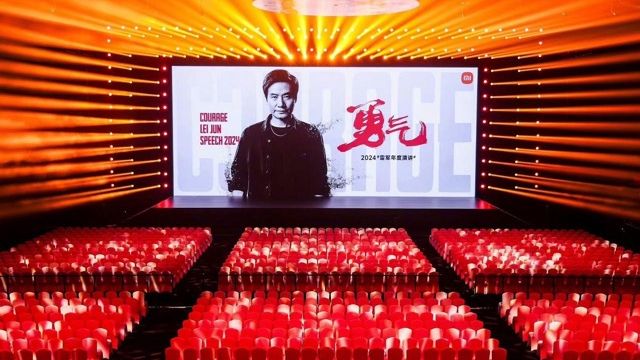Prior to the official launch of XiaoMi SU7, it was nearly universally thought that it would not sell.
This was emotionally shared by Lei Jun during his fifth annual address this evening.
Yet contrary to the perceptions of many at the time, after the official launch of the XiaoMi SU7 on March 28 of this year, it not only didn’t falter in sales, but it also became a phenomenon-level hot seller.
According to official data, the XiaoMi SU7 breach 10,000 units in sales just 4 minutes after launch, and reached 50,000 units in 27 minutes. And in just three months, the XiaoMi SU7’s delivery volume had reached tens of thousands.
In addition, according to XiaoMi’s latest forecast, the delivery volume of the XiaoMi SU7 will continue to exceed tens of thousands in July; by November of this year, XiaoMi will be able to achieve its target of 120,000 annual deliveries.
Clearly, XiaoMi SU7 has achieved great market success, but this success did not come smoothly. In fact, from the moment XiaoMi decided to manufacture cars, Lei Jun and XiaoMi faced a great deal of worry and pressure, surprisingly coming from the United States.
A Car-making Journey Forced by Circumstances
At seven o’clock on the morning of January 15, 2021, Lei Jun received a phone call. The voice on the other end said, “Mr. Lei, you’re under U.S. sanctions.”
Indeed, in January 2021, Trump issued an executive order at the end of his term, blacklisting XiaoMi and 43 other Chinese companies as “Chinese Military Companies”. Any Chinese enterprise on this list would be restricted from purchasing American commodities, software, technology services, and so on.
U.S. restrictions caused a significant drop in XiaoMi’s share price, and the operation of its core business, the mobile phone, became fraught with uncertainty.
That day, XiaoMi convened a board meeting to discuss a response to U.S. sanctions. According to Lei Jun, one of XiaoMi’s directors asked during the meeting, “If XiaoMi’s mobile phone business fails, what will happen to XiaoMi’s thirty to forty thousand employees?” This question deeply concerned Lei Jun. At this moment, another director suggested manufacturing cars.
We all know that by 2021, Tesla was booming in China, and the new car-making forces were very popular. Centered around intelligence and electrification, new car-making enterprises and innovative car models emerged constantly. The entire new energy car market was in a time of fierce competition and constant emergence of heroes.
For XiaoMi at that time, apart from the sanction issue, there was one problem that made XiaoMi extremely uneasy — the premium brand issue.
Because the label of cost-effectiveness of XiaoMi deeply ingrained in the minds of people, XiaoMi’s high-end image was always difficult to establish. Lei Jun was very anxious about this. Lei Jun also once mentioned that if the company could not continue to upgrade its capabilities by striving in the high-end market, it would inevitable head towards mediocrity and even decline in the long run. Manufacturing cars was exactly an efficient way to enhance XiaoMi’s brand value.Therefore, when the director proposed the idea of car production, Lei Jun was indeed touched. Subsequently, Lei Jun initiated research on the new energy vehicle market.
After extensive research, Lei Jun found that the automobile was merging with the consumer electronics industry, and the trend toward intelligent electric vehicles was unstoppable.
At the same time, Lei Jun realized that the new energy vehicle market was densely packed. It was likely to end up like the mobile phone industry, where only 5-8 companies remained after extensive competition. In Lei Jun’s view, if Xiaomi’s cars aren’t ranked among the top five, it might not survive.
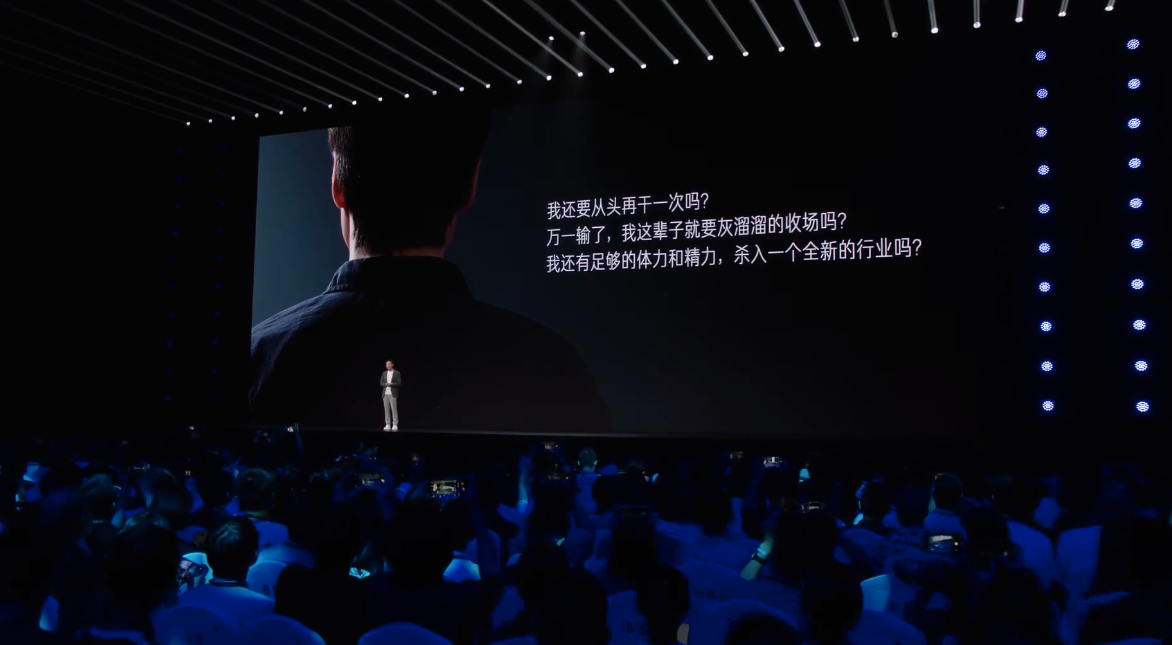
Eventually, after 70 days of research with 85 sessions and interviews with over 200 people, under Lei Jun’s leadership, Xiaomi decided to manufacture cars with an investment of 10 billion US dollars.
On March 30, 2021, Lei Jun officially responded to Xiaomi’s board of directors, expressing his willingness to step forward if this venture was considered necessary, and if everyone thought he was the best choice.
On the same day, Lei Jun held the famous car manufacturing announcement. At the conference, Lei Jun proclaimed “The last venture, fight for Xiaomi cars,” a slogan filled with romanticism.
With the decision to manufacture cars, Xiaomi, though reluctantly at first, never looked back but courageously continued the journey. After all, by conducting the announcement on March 30, Lei Jun effectively cut off his retreat.
Maintaining Orthodox, not ready to play a disruptive role in car production
If one ponders on the advantages of Xiaomi in car manufacturing, Lei Jun’s personal influence is definitely a significant factor.
At 5 o’clock on the morning of March 31, 2021, Lei Jun received a message from Xiaomi’s 37th employee, Liu Anyu. Liu Anyu told Lei Jun that he would be willing to do anything as long as he could take part in the car manufacturing.
The reason why Liu Anyu was determined to join Xiaomi’s car production was simple. On one hand, he was a full-fledged car enthusiast. On the other hand, he was inspired by Lei Jun’s announcement laden with romanticism.
Indeed, the launch not only touched Liu Anyu, but also convinced the BMW designer Li Tianyuan to return to work from Europe with his family. Moreover, it attracted Hu Zhengnan, the former dean of the Geely Research Institute and a partner at Shunwei Capital, to join Xiaomi and participate in the car manufacturing project.
As Lei Jun mentioned, the press conference attracted many people to join Xiaomi cars. Additionally, Lei Jun added that Xiaomi Cars had received over 380,000 applications in three years.
Interestingly, not only were there many people willing to join Xiaomi’s car team, there were also several investment offers. Lei Jun stated that if Xiaomi decided to operate outside the Xiaomi system, the capital market valuation could reach 10 billion US dollars.
But Lei Jun was not swayed by these offers. In his view, car manufacturing is a long-term project. If he were to accept outside investments, it would be challenging to maintain his original mindset.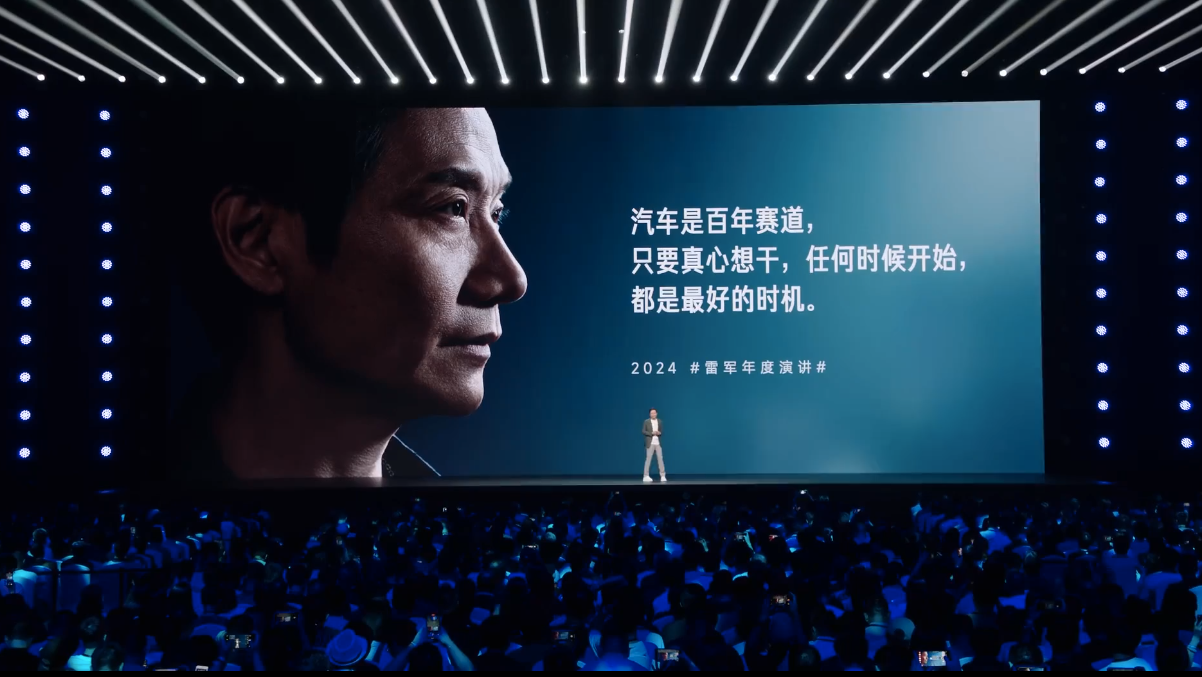
So, Lei Jun decided to follow his own path, making cars through the entire XiaoMi ecosystem without adopting the light-asset operating model of foundry. Starting from the core technology, step by step, he started to chart the course of automobile manufacturing.
In the early stages of R&D, the Chinese automobile industry chain was relatively mature, but XiaoMi’s car production was still finding its way, like crossing the river by feeling the stones. In just over ten months, more than ten battery packs were created, costing tens of millions.
During the first review meeting of XiaoMi’s car before the Spring Festival in 2022, heated debates erupted within the team. Sometimes, a single issue could spark arguments from 9 a.m. to 9 p.m.
In face of such contentious circumstances, Lei Jun decided they should keep arguing no matter what until they reached a resolution.
Eventually, the review meeting lasted for 21 days. The result was the discard of all plans and starting from scratch. As can be seen from the image shared by Lei Jun in his speech, the initial XiaoMi SU7 was vastly different from the current version.
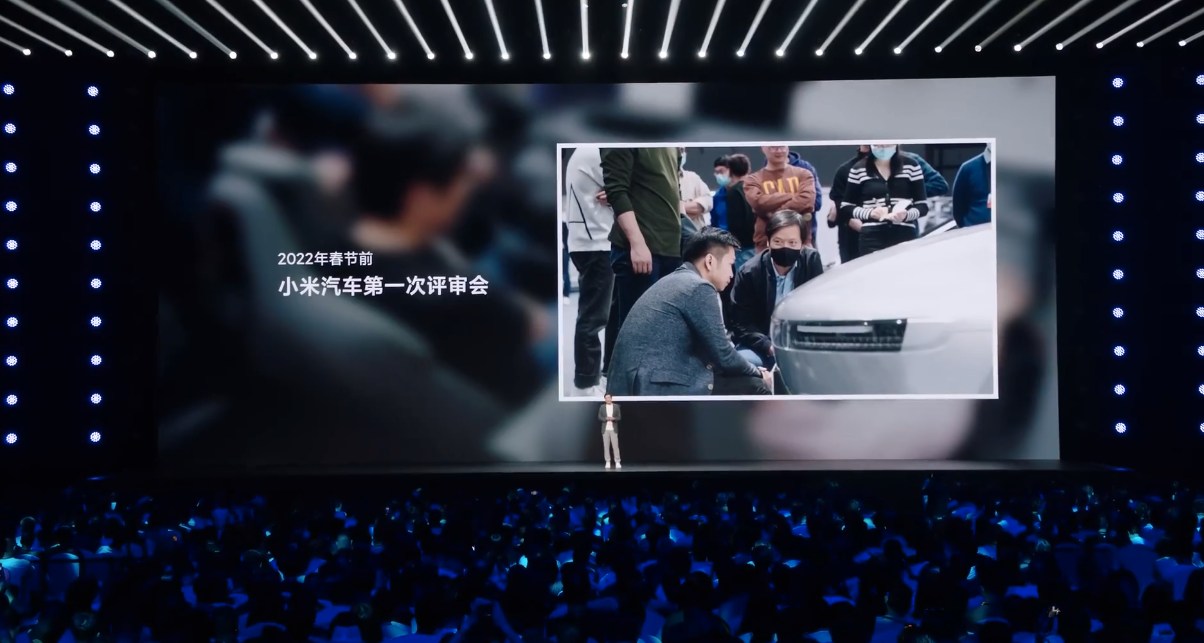
Moreover, after 21 days of debate, an important consensus was reached by the team during the review meeting – securing the production license would be XiaoMi’s greatest victory.
Therefore, XiaoMi established the principle of “upholding the regular, bringing forth the new” for car manufacturing. They aimed to manufacture cars in a systematic way. Initially, there was no intention to disrupt or cause a stir.
Lei Jun, the Driving CEO
After deciding to manufacture cars, Lei Jun set a personal goal to become one of the best driving CEOs among domestic car manufacturers.
For this purpose, Lei Jun started by driving cars himself. He admitted that before deciding on car manufacturing, he had always had a dedicated driver. This resulted in Lei Jun being unaccustomed to driving. Hence, after the decision, Lei Jun chose to let his driver sit back while he did the driving.
Meanwhile, to spend more time driving and understanding cars, Lei Jun also borrowed cars from his friends and colleagues. He test drove various makes in 4S stores.
In addition, Lei Jun would also often visit XiaoMi’s underground garage to see which cars he hadn’t driven. If there was a car he hadn’t driven before, he would borrow it for a spin. He also proactively enquired car owners about their experiences, such as what they liked about their cars, what they didn’t like, and what criteria they would consider for their next car.
In short, Lei Jun made efforts to understand and learn about cars through various channels. According to him, he has test-driven over 170 cars and amassed over 200,000 words of notes.
After spending a substantial time studying, Lei Jun has developed his driving skills. At the annual speech, he even shared a video of himself doing a drift.
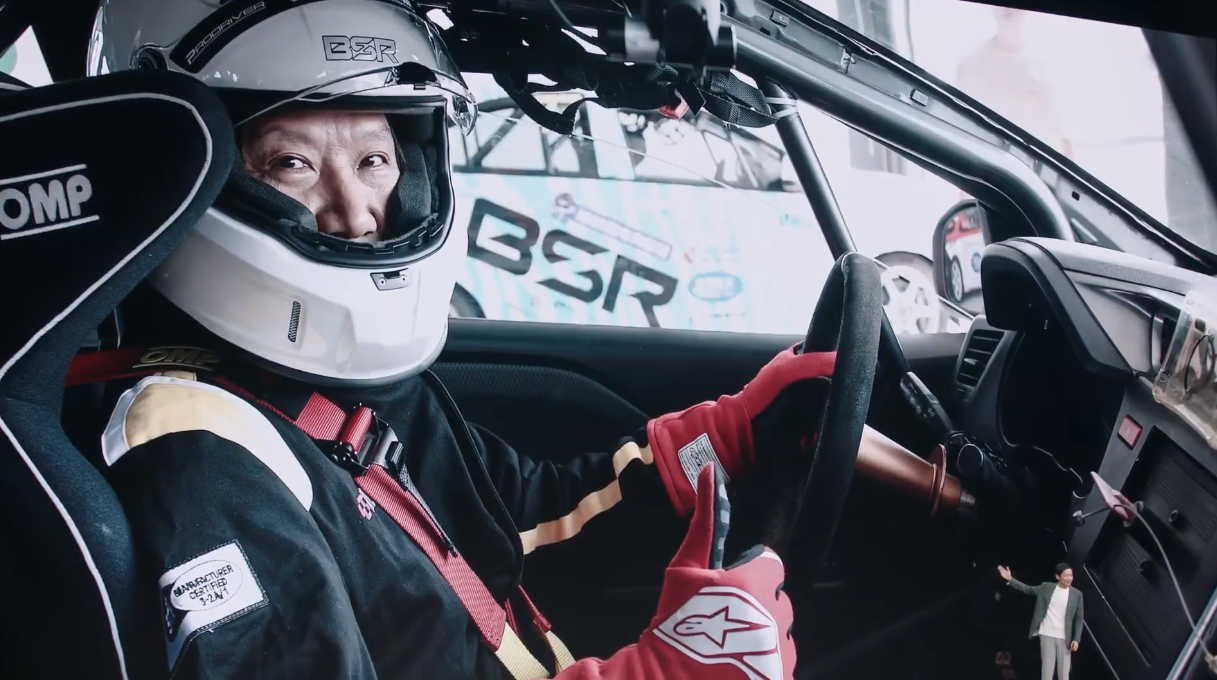 Of course, what’s even more significant, Lei Jun is putting his own knowledge of automobiles into manufacturing cars. He was personally involved in the winter and summer testing of Xiaomi SU7, and he personally drove the Xiaomi SU7 for 5,000 kilometers, also encouraging senior executives of Xiaomi to collectively test drive the Xiaomi SU7 for 100,000 kilometers.
Of course, what’s even more significant, Lei Jun is putting his own knowledge of automobiles into manufacturing cars. He was personally involved in the winter and summer testing of Xiaomi SU7, and he personally drove the Xiaomi SU7 for 5,000 kilometers, also encouraging senior executives of Xiaomi to collectively test drive the Xiaomi SU7 for 100,000 kilometers.
Under Le Jun’s leadership, Xiaomi spent three years rolling out Xiaomi SU7. However, before Xiaomi SU7 was officially launched, Lei Jun plunged into extreme depression.
Lei Jun explained that before Xiaomi SU7 was officially launched, Xiaomi sought advice from numerous people, but as mentioned at the beginning of this document, almost everyone believed it wouldn’t sell.
People Lei Jun communicated with during that time expressed their belief that Tesla had a strong fan following and 34C car owners who are about to switch cars would pay heavy attention to the brand. In addition, internals within Xiaomi submitted reports that were dozen of pages long indicating female drivers are typically uninterested in performance cars.
At the same time, Lei Jun also communicated with some of the press, and the general opinion amongst them was “selling 3,000 pure electric sedans a month is a massive achievement”.
These pieces of information were all delivering one message to Lei Jun; Xiaomi SU7 might not sell well. But Lei Jun still chose to believe that Xiaomi SU7 would sell massively.
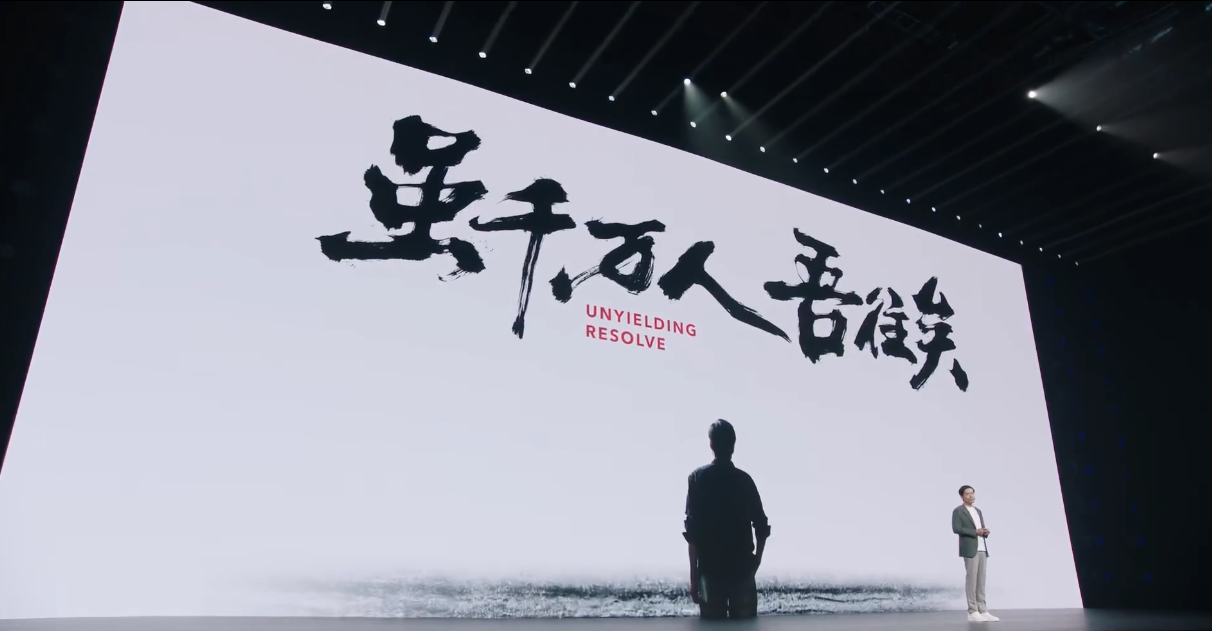
Therefore, when Xiaomi had to order from the supplier in February this year, even though many people thought it would also be enough to set an annual output of 30,000, Lei Jun still chose to set it to 76,000. This means, if 76,000 unit annual output is to be exhausted, Xiaomi SU7 must achieve an average delivery of over 10,000 units per month.
In addition to the problem of output, setting the price is also a tough problem. As everyone understands, at that time, the discussion about the pricing of Xiaomi SU7 was hot, with amounts from 99,000, 149,000, to 199,000 being suggested.
But in the eyes of Lei Jun, rational pricing will help go further; low pricing is simply a temporary solution to a permanent problem. It was not until the meeting day before the launch that Lei Jun finally set the price at 215,900. According to Lei Jun, one of the senior executives said at the meeting that no matter how many are sold, XiaoMi would accept it.
The subsequent facts proved that Lei Jun’s determination was correct. Xiaomi SU7 became a phenomenal hit, and Xiaomi successfully made it onto the car brand leaderboard.
On the success of Xiaomi SU7, Lei Jun said in the annual speech:
Xiaomi SU7’s success hides enormous courage behind it. This is not the courage of one person, but the courage of over 40,000 people in the XiaoMi group.
Finally
In the closing of his annual speech, Lei Jun reiterated the ambition of Xiaomi to become a top 5 global auto manufacturer in the next 15-20 years, and in order to become a top 5, Xiaomi must have the courage to compete with the world’s leading car manufacturers.
Therefore, Xiaomi decided in October this year to officially compete in the Nürburgring, and the weapon that will compete in the Nürburgring is the Xiaomi SU7 Ultra prototype car that made a stunning appearance at the end of the annual speech.
The XiaoMi SU7 Ultra prototype vehicle is equipped with two XiaoMi self-developed V8s motors running at 27,200 rpm, and an additional V6s motor. With the power of three motors, the XiaoMi SU7 Ultra prototype vehicle boasts a whopping 1548 horsepower, capable of reaching a 0-100 acceleration time of 1.97 seconds, and a top speed of over 350 km/h.
Furthermore, the XiaoMi SU7 Ultra prototype vehicle was constructed with a complete carbon design, 100% of the body coverage components are made from carbon fiber material, bringing the total weight of the vehicle down to a mere 1,900 kg.
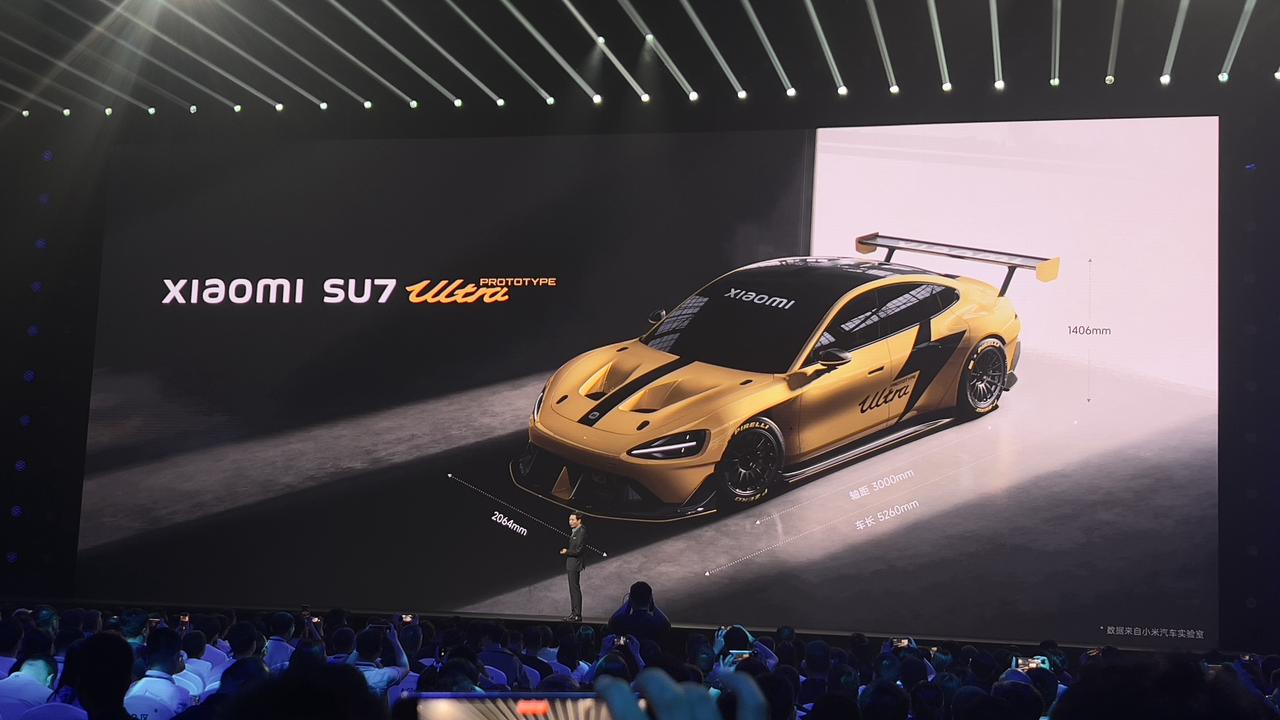
Intriguingly, Lei Jun indicated that this vehicle is remarkably expensive, so much so that he himself could not afford it.
In a way, the XiaoMi SU7 Ultra prototype reflects the current state of XiaoMi Auto’s development – Remarkably powerful, seeming light despite heavy burdens, and continually challenging the pinnacle.
However, the new energy vehicle market is fiercely competitive and crowded. The elimination contest is still ongoing, and numerous challenges lie ahead waiting for XiaoMi to tackle. XiaoMi needs to remain grounded with every move it makes, as Lei Jun said in his speech, XiaoMi’s long march has only just begun.
This article is a translation by AI of a Chinese report from 42HOW. If you have any questions about it, please email bd@42how.com.
